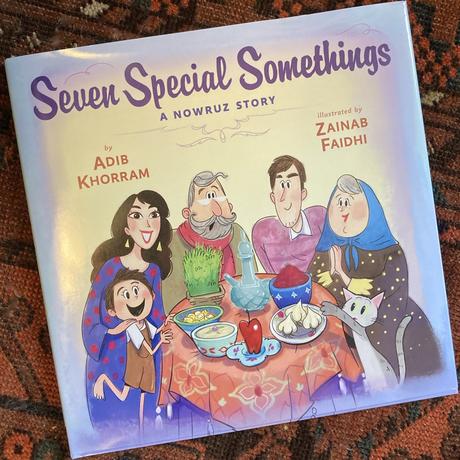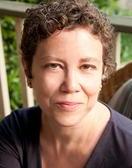
On this spring equinox in the northern hemisphere, the light is returning, lifting spirits, bringing hope. This year, we are especially in need of that returning warmth, that extra sunlight, those longer days. A year ago, the cancellation of big family gatherings for Easter, Passover, and Ramadan, felt crushing. This year, we are more patient, more prepared. I have a Passover haggadah already loaded on my powerpoint for our zoom Seder with my Jewish and Protestant and Catholic family, and I'm busy editing the slides. We've got this.
To all interfaith families with Persian heritage, Happy Nowruz, the Persian New Year! Nowruz has roots as a Zoroastrian spring holiday thousands of years ago, before the advent of Judaism or Christianity or Islam. Today, it is beloved by people of many religions with Persian heritage, including Zoroastrians, Muslims, Christians, Jews, and people of the Baha'i faith. Nowruz (or Naw-ruz or Norooz) is celebrated by some 300 million people worldwide, including in Afghanistan, Albania, India, Iran, Kazakhstan, Pakistan, Turkey and Turkmenistan, and throughout the Persian diaspora, including in the Iranian American community around Los Angeles. While it is often called a secular holiday, people of different religions adapt Nowruz to honor their own religious texts. So Nowruz is perhaps more multi-religious, or interfaith, than it is secular.
As a lover of all things interfaith, I love that Nowruz is often celebrated together by Persian friends and family of different religions. To be honest, many Americans probably first became aware of Nowruz through the Shahs of Sunset, the long-running reality show about a group of wealthy Jewish and Muslim Persian-American friends in Los Angeles. (I stand by my affection for the interfaith friendships depicted on that show, even though it's, well, hyped-up capitalist glamour trash).
My favorite scene of interfaith friends celebrating Nowruz together is probably in Darius the Great is Not Okay, the marvelous YA novel by Adib Khorram. Darius, an American teen from an intercultural Zoroastrian/humanist family, travels to Iran to visit his grandparents. In a key scene, Iranian Zoroastrian and Baha'i family friends celebrate Nowruz together.
Just in time for Nowruz, Khorram has now published a charming children's picture book Seven Special Somethings: A Nowruz Story. The book centers on the Nowruz tradition of the haft-seen, a table displaying seven objects that start with the letter S in the Persian language, Farsi. The seven traditional symbols are sprouts (rebirth), garlic (health), vinegar (patience), coins (wealth), apples (beauty), wheat sprout pudding (bravery), and sumaq spice (sunshine). There may be many additional items, depending on family and religion.
Many haft-seen symbols refer to the ancient spring equinox themes of fertility, renewal and rebirth. For instance, painted eggs are often included, tying the holiday thematically to Passover and Easter and Ostara. Other haft-seen items may include a live goldfish in a bowl, and an orange floating in water to symbolize our planet in space. Through my own cultural lens, I cannot help but see a connection here to Passover symbols including spring greens ( parsley), a carp in a bathtub, and an orange on the seder plate.
I am not saying that the orange on the seder plate (a new Passover symbol of the importance of LGBTQ people) was borrowed from Nowruz. (Although Zoroastrianism did have a profound influence on Abrahamic religions in ancient times). My point is that spiritual connection to the return of light, and the mating and planting season in the northern hemisphere, inspire the repetition of these primal natural symbols in multiple religions. We are all linked as inhabitants of this planet to our place in space and time, by astronomy and biology. The wheat starts to sprout, the fish swim and spawn, the eggs hatch. We celebrate it all.
Journalist Susan Katz Miller is an interfaith families speaker, consultant, and coach, and author of Being Both: Embracing Two Religions in One Interfaith Family (2015), and The Interfaith Family Journal (2019). Follow her on twitter @susankatzmiller.
